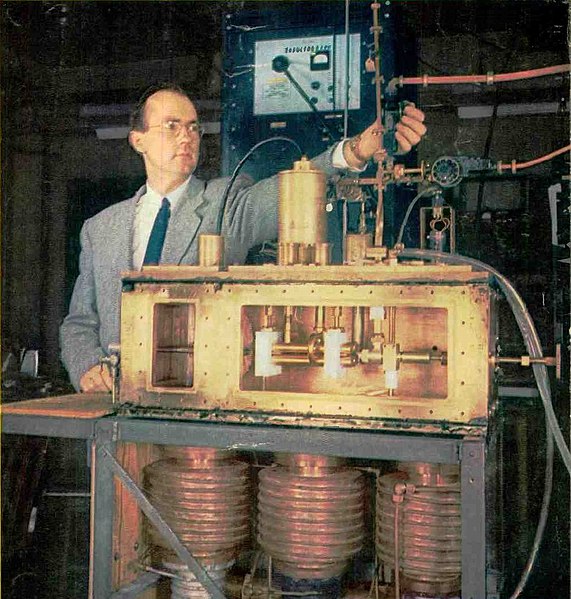Joseph Weber was an American physicist. He gave the earliest public lecture on the principles behind the laser and the maser and developed the first gravitational wave detectors.
Weber depicted in US Naval Academy uniform in 1940.
A maser is a device that produces coherent electromagnetic waves (microwaves), through amplification by stimulated emission. The term is an acronym for microwave amplification by stimulated emission of radiation. First suggested by Joseph Weber, the first maser was built by Charles H. Townes, James P. Gordon, and Herbert J. Zeiger at Columbia University in 1953. Townes, Nikolay Basov and Alexander Prokhorov were awarded the 1964 Nobel Prize in Physics for theoretical work leading to the maser. Masers are used as the timekeeping device in atomic clocks, and as extremely low-noise microwave amplifiers in radio telescopes and deep-space spacecraft communication ground stations.

The first prototype ammonia maser in front of its inventor Charles H. Townes. The ammonia nozzle is at left in the box, the four brass rods at center are the quadrupole state selector, and the resonant cavity is at right. The 24 GHz microwaves exit through the vertical waveguide Townes is adjusting. At bottom are the vacuum pumps.


